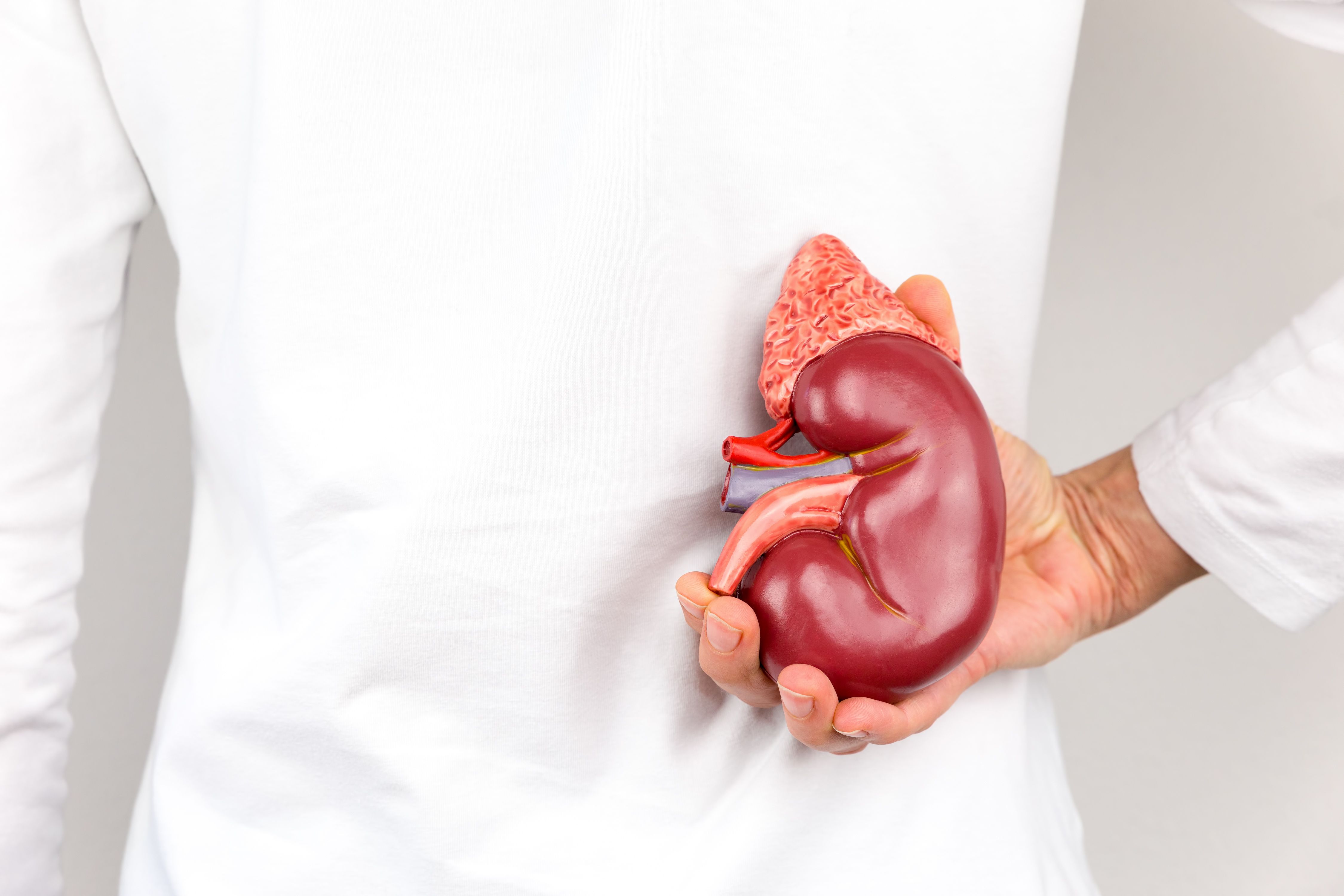Multitargeted Internal Calibration Using LC–MS Quantifies Chronic Kidney Disease-Linked Metabolites
Researchers have developed a multitargeted internal calibration method for precise quantification of chronic kidney disease (CKD)-related endogenous metabolites using liquid chromatography–mass spectrometry (LC–MS).
In the world of analytical chemistry, precision is paramount, particularly when it comes to quantifying endogenous metabolites related to chronic kidney disease (CKD). In a recent study published in Analytical Chemistry, a research collaboration between the University of Geneva and Geneva University Hospitals in Switzerland has introduced a multitargeted internal calibration (MTIC) method that promises more accurate quantification using liquid chromatography–mass spectrometry (LC–MS) (1). This method could have significant implications for clinical laboratories seeking to diagnose and monitor CKD more effectively.
Hand holding model of human kidney organ at body | Image Credit: © benschonewille - stock.adobe.com

Accurate quantitative analysis in LC–MS relies heavily on calibration curves generated in the same matrix as the study sample. However, when it comes to quantifying endogenous compounds in complex biological matrices, such as serum or plasma, the absence of a blank matrix complicates matters. This is where MTIC steps in as an attractive and straightforward solution.
MTIC hinges on the use of stable isotope labeled (SIL) standards as internal calibrants. These SIL standards allow for the simultaneous quantification of authentic analytes within the same sample, eliminating the need for extensive matrix similarity evaluation. In the study, the researchers applied this approach to the quantification of metabolites associated with CKD.
The workflow began with the collection of a mere 20 μL of serum or plasma, thanks to a volumetric microsampling device. Following collection, a single-step extraction was performed using acetonitrile and water, and the resulting samples were subjected to liquid chromatography–tandem mass spectrometry (LC–MS/MS) analysis.
One of the key advantages of MTIC is the requirement for only a single concentration of internal calibrant to calculate the concentration of the study sample. The researchers investigated the instrument response function to determine the most suitable SIL concentration.
After rigorous validation, the results demonstrated the effectiveness of the MTIC method. The trueness of quantification for 16 endogenous analytes in authentic human serum ranged from 72.2% to 116.0%, highlighting its accuracy. Additionally, the method exhibited repeatability, with values ranging from 1.9% to 11.3%. Intermediate precision across the board ranged from 2.1% to 15.4%.
The practicality of this approach became evident when it was applied to plasma samples collected from various groups, including healthy control participants and two patient groups diagnosed with CKD. The findings confirmed substantial concentration differences between these groups for several analytes. Notably, analytes like indoxyl sulfate and cortisone displayed significant concentration variations, shedding light on their relevance in the context of CKD. Moreover, the method revealed metabolic enrichment in the kynurenine and indole pathways, providing valuable insights into the disease's biochemical underpinnings.
This multitargeted internal calibration methodology has the potential to advance LC–MS/MS quantification of endogenous biomarkers. Its enhanced accuracy and streamlining of the quantification process shows promise for advancing the role of mass spectrometry use in clinical laboratories. As researchers continue to refine and apply this method, it may improve the diagnosis and monitoring of CKD, ultimately benefiting both patients and healthcare professionals.
This article was written with the help of artificial intelligence and has been edited to ensure accuracy and clarity. You can read more about our policy for using AI here.
Reference
(1) Visconti, G.; de Figueiredo, M.; Strassel, O.; et al. Multitargeted Internal Calibration for the Quantification of Chronic Kidney Disease-Related Endogenous Metabolites Using Liquid Chromatography–Mass Spectrometry. Anal. Chem. 2023, 95 (36), 13546–13554. DOI: 10.1021/acs.analchem.3c02069
Investigating PFAS in Plastic Food Storage Bags Using LC–MS/MS
May 8th 2024Yelena Sapozhnikova from the United States Department of Agriculture spoke to The Column about her innovative research investigating PFAS in plastic food storage bags using targeted and non-targeted liquid chromatography–tandem mass spectrometry.